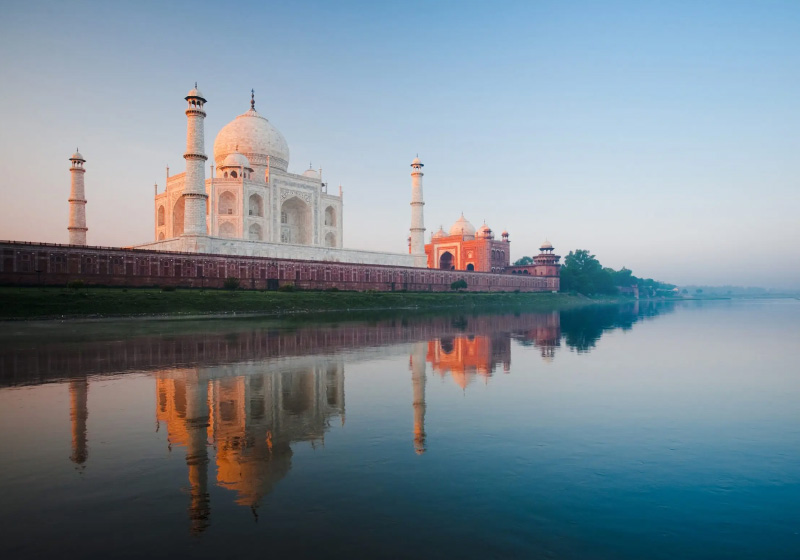
Discovering India's rich history, culture, and architectural marvels by visiting Delhi, Agra, and Jaipur, known as the Golden Triangle, is an amazing experience. This itinerary offers a varied and remarkable journey from the busy streets of Delhi to the romantic charm of the Taj Mahal in Agra and the royal palaces of Jaipur. To maximize your journey, it is crucial to know when to go if you are planning a trip. With an emphasis on the ideal seasons, what to anticipate, and how to get ready, this guide will walk you through every aspect of traveling to Delhi, Agra, Jaipur, and the Taj Mahal.
Understanding North India's climate is crucial before delving into the particulars of each location. Summer, monsoon, and winter are the three main seasons of the area. You can determine the Best Time to Visit the Golden Triangle India by being aware of the features of each season.
Temperature: North India experiences scorching summers that frequently reach beyond 40°C (104°F). During this season, Delhi, Agra, and Jaipur can get very hot, especially for people who aren't used to it.
Travel Experience: Daytime sightseeing can be difficult due to the heat. But since this is the off-season for travel, you might find cheaper lodging and less crowding at the main attractions. Plan your outside activities early in the morning or late at night, when the temperature is a little lower, if you must travel during this time.
Temperature: The monsoon season, which has temperatures between 25°C and 35°C (77°F and 95°F), provides much-needed respite from the summer heat. However, there is also a lot of rainfall around this time, which might occasionally cause travel plans to be disrupted.
Travel Experience: Rain may create a verdant, lush landscape that provides a new angle on the cities. Rainstorms, however, can also cause travel delays and interfere with outdoor activities. You might have a more peaceful experience in well-known locations because it's a less crowded time for travelers.
Temperature: With temperatures between 8°C and 20°C (46°F and 68°F), winter is the most comfortable season in North India. Since the weather is cooler and ideal for touring, this is the busiest time of year for tourists.
Travel Experience: Winter is the ideal season for outdoor activities and city exploration because of the clear skies and comfortable temperatures. Additionally, there are a lot of festivals and events throughout this time of year, which enhances the cultural diversity of your trip. But since it's the busiest time of year, there will be more visitors and more expensive lodging.
Here are some useful suggestions to help you get the most out of your vacation now that you know when to go and what to do in the historic Triangle cities.
Plan Ahead: It's crucial to make travel plans in advance because the busiest travel seasons are the best times to visit these destinations. To guarantee availability and avoid last-minute problems, book your accommodations, flights, and tours well in advance.
Pack appropriately: Packing the appropriate clothing is crucial, depending on the season you are visiting. Bring clothing in the winter because nighttime lows can be rather low. Clothing that is breathable and light is essential in the heat. Additionally, because you will be walking a lot, remember to bring comfortable shoes.
Stay Hydrated: Drink plenty of water because North India's arid climate might cause dehydration, particularly if you're traveling there in the summer. Drink lots of water and keep a bottle with you at all times.
Observe Local Customs: India has a rich history of customs and traditions. Wear modest clothing, particularly when you're at a place of worship. It's also crucial to observe local customs, including taking off your shoes before visiting a temple or someone's house.
Be Ready for Crowds: Due to their popularity as travel destinations, Delhi, Agra, and Jaipur are likely to have large crowds, particularly at iconic sites like the Taj Mahal and Amber Fort. You can avoid the busiest times of day by going early in the morning or late in the afternoon.
Transportation: Navigating these cities might be difficult, particularly in Delhi and Jaipur due to the heavy traffic. For convenience, think about using ride-sharing services like Ola and Uber or renting a private vehicle and driver. Auto Rickshaws are a common form of transportation in Agra.
Local Cuisine: On every journey to India, it is imperative to sample the native cuisine. Start with gentler foods and work your way up if you're not used to spicy cuisine. If you have a sensitive stomach, stay away from street food and always drink bottled water.
Photography Etiquette: Although most tourist destinations permit photography, always get consent before snapping pictures of people, particularly in rural regions or at places of worship.
Your vacation to Delhi, Agra, and Jaipur will be an amazing experience full with lifelong memories if you plan ahead and do a little preparation. Regardless of your interests—history, cuisine, or photography—these cities provide countless chances to explore, learn, and have fun. Prepare to travel to one of India's most fascinating places by packing your baggage and making an itinerary. Awaiting you is your journey!
We are delighted that you reached here.
Please share your queries with us regarding the booking tour with us.